Our Dragons minion and composition guide goes through everything you need to know about the Dragons tribe in Hearthstone Battlegrounds! This guide will teach you when and how to use Dragons in your warband in Battlegrounds!
Introduction to Dragons
Dragons are one of the strongest tribes in Hearthstone Battlegrounds. They provide a strong mix of high stats and Divine Shields, which makes them capable of taking on any opponent. However, the path to late-game Dragons is not an easy one as the centerpiece of Dragon compositions is a tier-six minion, Kalecgos, Arcane Aspect, and Divine Shields truly come into play for the tribe from another tier-six minion, Nadina the Red.
Getting into Dragons can therefore be more difficult than getting into most of the other tribes, but hitting an early triple on a tier-five Tavern has the potential to be rewarded with access to the full power of the Dragon tribe.
Table of Content
- Dragons and Dragon-related Minions
- Best Heroes for Dragons
- Dragons Early Game Strategy & Compositions
- Dragons Mid Game Strategy & Compositions
- Dragons Late Game Strategy & Compositions
Dragons and Dragon-related Minions in Hearthstone Battlegrounds
Tier 1
Dragonspawn Lieutenant is a weak tier-one minion. It is generally not used in mature Dragon warbands nor is it particularly good at winning battles at the start of the game.
Red Whelp is also a weak tier-one minion. While a pair of Red Whelps can do some things in the early turns, it is generally not used.
Tier 2
Glyph Guardian is a fairly strong tier-two minion. Because it gains more power when it attacks, even a small initial buff on it can result in a minion that can easily punch through any early-game Taunt minions. Even an unbuffed Glyph Guardian can be a viable pick in the early-game when you’re just looking for the most powerful minions you can find each turn. As Dragons are largely based on buffing existing minions on your board, Glyph Guardian may stay in your Dragon warband all the way to the end.
Steward of Time has a decent stat line for the early game, and thanks to the buff it gives to minions in Bob’s Tavern when it is sold, it is a reasonable early-game pick, albeit weaker than Glyph Guardian. It has no long-term role in a Dragon army.
Waxrider Togwaggle has a low starting stat line, but it can grow rapidly when accompanied by multiple Dragons. However, temporary in-combat buffs are not very strong in the current meta, where permanent buffs are easily available and outpace the temporary ones. Consequently, Waxrider Togwaggle is an extremely situational pick, mostly to be used if your early board happens to consist of Dragons already. It is then sold in the mid-game when it can no longer keep up with the competition.
Tier 3
Bronze Warden is a surprisingly strong minion. Do not let its low stat line fool you: with Divine Shield and Reborn, it is practically four minions in one. While any buffs do not carry over to the Reborn copy of the minion, Bronze Warden is a phenomenal buff target, and as such one of the pieces that can stay in your Dragon warband all the way. It is a useful mid-game minion even when you’re not attempting to build a Dragon board.
Hangry Dragon is cursed, right? When you win with Hangry Dragon on your board, it grows, but buying Hangry Dragon is one of the surest ways to ensure a loss in the following round of combat. It does not give you a lot of stats for a tier-three minion, so buying Hangry Dragon is a risky endeavor: if you’re far enough ahead to win with it, it puts you even further ahead, but if you lose, it becomes a liability. The best way to get a Hangry Dragon is to discover it from an early triple or as A. F. Kay, in which case its stat line still packs enough of a punch to be an asset in combat. The second-best way is to be ahead already and win more thanks to Hangry Dragon.
Twilight Emissary is a strong tier-three minion if you happen to have any Dragons in your warband. Following up a Glyph Guardian with a Twilight Emissary can create a strong early-game board.
Tier 4
Cobalt Scalebane has a decent stat line and it slowly buffs up your board. However, it does not do anything truly special, and you start to look for some real power on tier four. Cobalt Scalebane is OK, but not something you look forward to picking up.
Drakonid Enforcer is a situationally useful Dragon. Most Dragon Divine Shield synergies come into play with Nadina the Red on tier six, which makes Drakonid Enforcer a viable late-game Dragon. Earlier in the game, it can be useful if you have already picked up a Bronze Warden.
Herald of Flame is excellent at killing token boards: as its Overkill effect continues with each overkilled minion, it can wipe an entire board in a single attack. Alas, there are hardly any token boards in the game at the moment and the meta is very focused on huge stats. This makes Herald of Flame one of the weakest Dragons right now. It can still be situationally useful, but those situations are few and far between.
Tier 5
Murozond is extremely situational. You generally do not keep it for its stats, but picking one up right after fighting an opponent who uses the same tribe as you do is always a good move regardless of which tribe you are using.
Razorgore, the Untamed is the Dragon payoff card on tier five. It can give you a good start with Dragons, but it can also be a trap because it cannot carry a Dragon army without Kalecgos. Baron Rivendare, Mama Bear, or Nomi, Kitchen Nightmare can all carry an army on their back even if you fail to find any other great minions: perhaps not to a first-place finish, but often to the podium at least. Razorgore is one of the strongest Dragons, but it is not enough to carry the entire army, you still need to find Kalecgos to make your board truly special.
Tier 6
Kalecgos, Arcane Aspect is the heart and soul of Dragons. No Dragon army is complete without at least one copy of Kalecgos, and the more the merrier. An early Kalecgos always means pivoting to Dragons because Dragons are very powerful and Kalecgos is the most important piece to building a Dragon army.
Nadina the Red is the best late-game boost to a Dragon warband. You still need a good stat line first – which is what Kalecgos provides – but once you’re there, Nadina can ensure victory by giving your big Dragons Divine Shield on top.
Amalgadon is also a Dragon. As it can have Taunt, Divine Shield, and Poisonous, it is pretty good.
Heroes With the Best Dragon Synergies
Any Hero can succeed with any tribe, and many of the most powerful Heroes can use almost all tribes with a high rate of success. However, some Heroes have a greater affinity to specific tribes, and Dragons are no exception.
Dragons are exceptionally good for Heroes who can level up fast and get their first tier-six minions as early as possible: therefore, many of the top-tier Heroes are happy to go for Dragons, although they may as well end up with Elementals, depending on their Discoveries. Behind the absolute top Heroes who have a lot of flexibility in their tribe choices, there are also some Heroes that work better with Dragons than with any other tribe.
A. F. Kay is particularly fond of Dragons in the current meta: Bronze Warden and Hangry Dragon are some of the most powerful tier-three minions that A. F. Kay can Discover, and a Hangry Dragon on turn three can win the battle and start growing immediately.
For Alexstrasza, forcing Dragons is the main way to success. Even though it can be hard to find Kalecgos from the Hero Power, getting two free minions upon reaching tier five means that Alexstrasza can level up quickly, and by forcing Dragons you increase the odds of getting a triple when you hit tier five even if you don’t get the big Dragons immediately.
When your most important minion is from tier six and Infinite Toki has a Hero Power that allows you to look for tier-six minions faster than other Heroes, it is a perfect match. Sure, sometimes you end up with Goldrinn or Lil’ Rag and you don’t feel sorry about them either, but you also have good odds to find Kalecgos and build the dream Dragon board.
You don’t want to play as Ysera, as she is one of the weakest Heroes in the game, but if you have to, going Dragons is the way to go.
When and How to Use Dragons in the Early Game
You don’t really want to use Dragons in the early game. Dragonspawn Lieutenant and Red Whelp are both underwhelming as opening minions, but sometimes you have no choice. Glyph Guardian is a little better, so it makes more sense as a turn-three buy and a Red Whelp might find its way to your army alongside it.
An example of the early game for a Dragon player:
Turn 1: Sellemental
Turn 2: Upgrade your Tavern
Turn 3: Sell Sellemental, buy Glyph Guardian and Red Whelp
When and How to Use Dragons in the Mid-Game
Mid-game is where you start to seek a Dragon transition. However, the main minion that defines the tribe is Kalecgos on tier six, so the typical path to Dragons is an early tier five Tavern with an opportunity to go for a triple to get a Discover from tier six.
At this point, you are ideally ready for a Dragon board with some strong early-game Dragons in play, such as Glyph Guardian and Bronze Warden. However, Discovering an early Kalecgos should result in a pivot to Dragons even with no Dragons in play.
Examples of mid-game Dragon boards:
Getting ready for the triple: Bronze Warden, Bronze Warden, Herald of Flame, Drakonid Enforcer, Kaboom Bot, Kaboom Bot, Waxrider Togwaggle
Getting ready for the triple (alternative): Spawn of N’Zoth, Spawn of N’Zoth, Glyph Guardian, Party Elemental, Bronze Warden, Refreshing Anomaly, Molten Rock
This hopefully leads to Kalecgos time: Bronze Warden (golden), Herald of Flame, Drakonid Enforcer, Kalecgos, Kaboom Bot, Kaboom Bot, Waxrider Togwaggle
When and How to Use Dragons in the Late Game
Late-game Dragons are all about buffing your board with Kalecgos every turn and looking for Nadina the Red to complement big stats with Divine Shields for the perfect board.
If you have found Kalecgos, the composition is straightforward to play. But what if you haven’t? How late is too late to pivot to Dragons? It depends on how aggressive your lobby has been, but in general, the first few turns at ten gold are the latest you want to adopt this composition (turns eight to eleven). After that, it becomes increasingly difficult to scale up the stats of your minions while under pressure from the opponents.
Examples of late-game Dragon boards:
Stats and Shields: Nadina the Red, Glyph Guardian, Razorgore the Untamed, Murozond, Razorgore the Untamed, Kalecgos Arcane Aspect, Maexxna
Stats and Shields with a Taunt on top: Nadina the Red, Glyph Guardian, Razorgore the Untamed, Kalecgos Arcane Aspect, Kalecgos Arcane Aspect, Drakonid Enforcer, Amalgadon (Taunt, Poisonous)

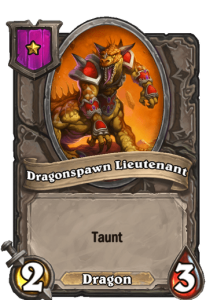
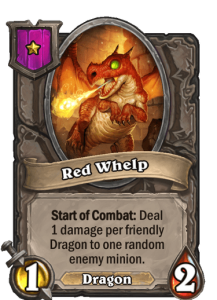

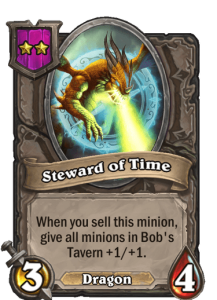

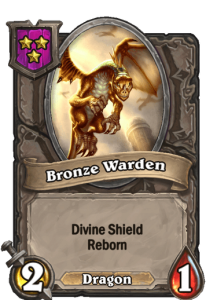
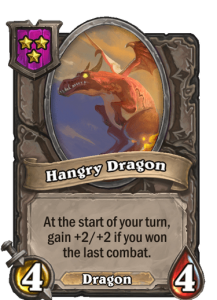

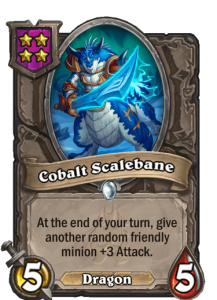


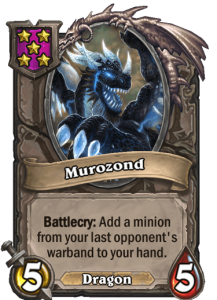
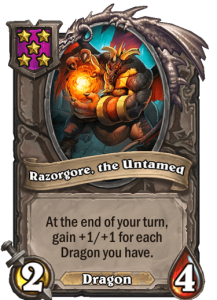
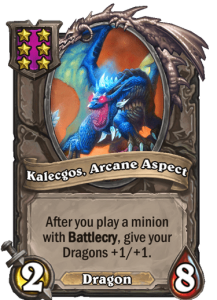

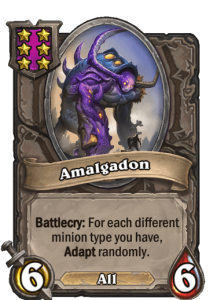
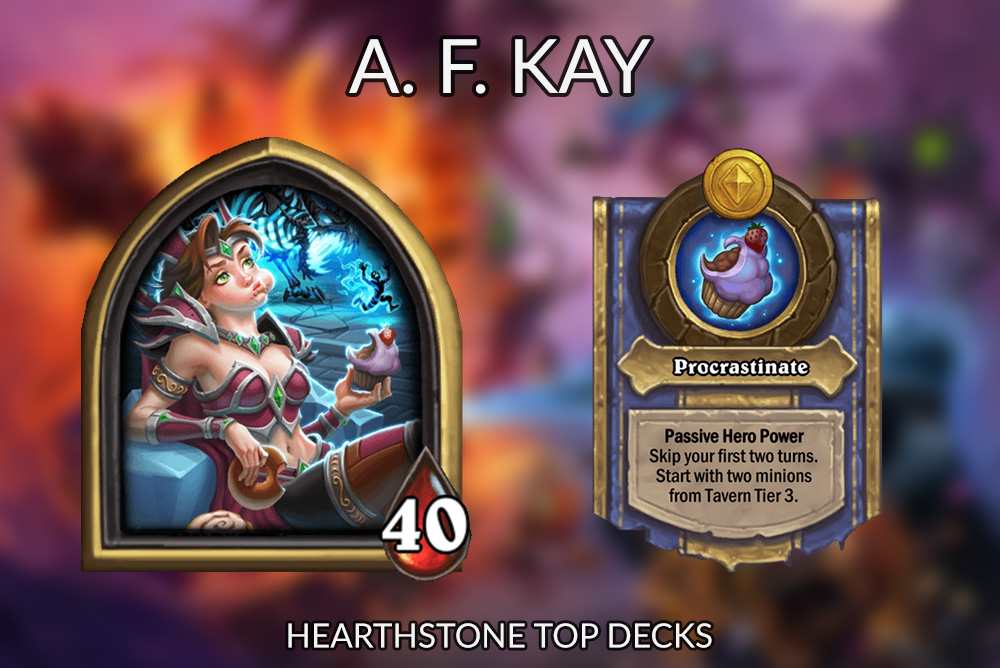
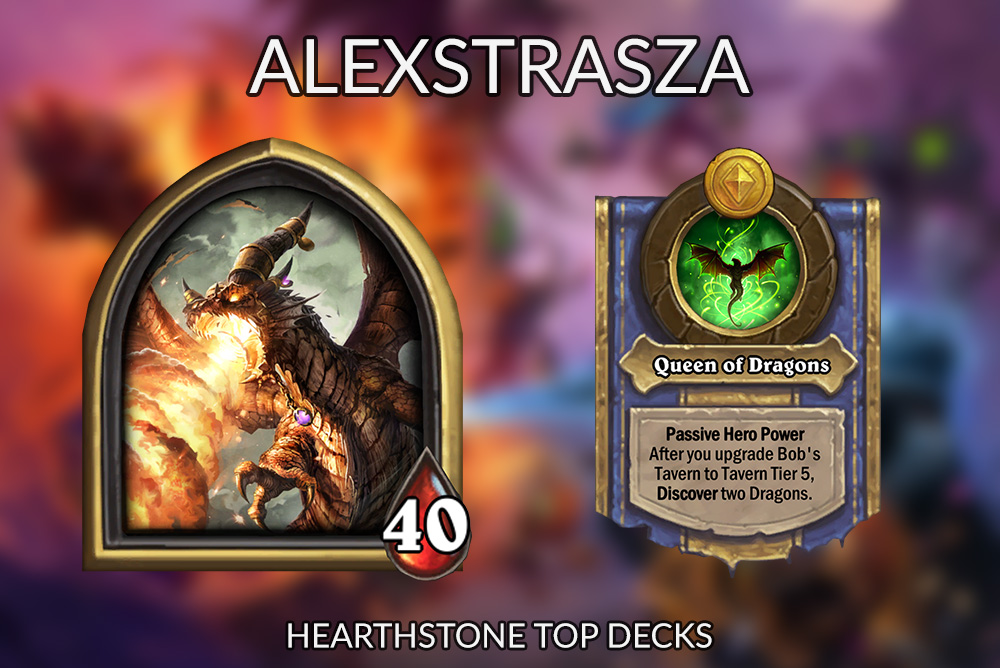

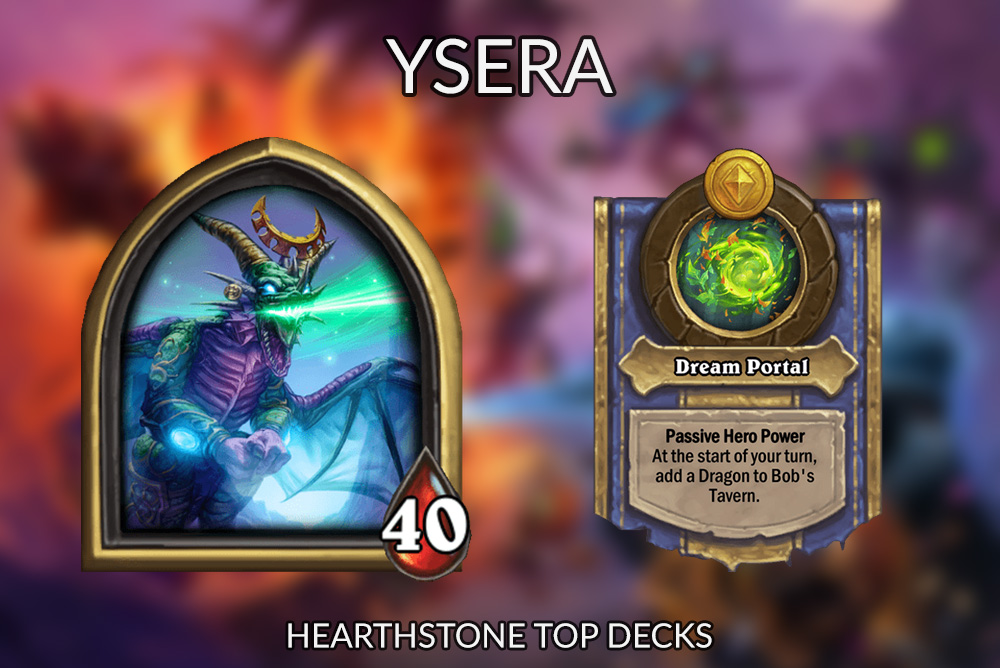



This is great! I would love a quick guide on when to buy shapeshifter zerus, unless he just sucks. I almost always pass the card up.
While I’m not an expert, I feel like Shifter Zerus is a good card to grab in the early-mid game when you have 3 gold left and nothing else to buy. In this scenario, the only alternative is roll – but if you roll into something you want to lock, you “waste” 2 gold. So grabbing Zerus is not a bad deal and it might sometimes win you the game if you high roll.
But in general, you won’t go looking for it, because it’s a pretty bad card on average.
Thanks, Stonekeep! That solid advice. I’m curious if you will ever do a multiclass guide. The multiclass meta seems weak right now.
thanks for the Guide. I have always problems to decide wich minion to sell or to have as a “battlecry spot”. In the end composition – wich minions is the one that I sell to get more buffs out of my buff cards + Kalecgos ?
Nadina the Red, Glyph Guardian, Razorgore the Untamed, Murozond, Razorgore the Untamed, Kalecgos Arcane Aspect, Maexxna
Is it here “maexxna” or “Nadine” when I found a second one? because the rest will be buffed all the time and to valuable, right?
The composition shown here is a final one after you’re done with buffing. In Kalecgos comps, you always have one “flex” spot until very late game, usually when you’re either one of the only 2 players left and want to finish it or when you’re close to dying, you transition from that flex spot to the last minion (often Maexxna to deal with big minions). And then you hope that it’s enough to win 🙂
That said, you still want to keep buying Battlecry minions, so if you find the second Maexxna (or Nadina, or whatever was your last card) you can sell it, play a bunch of Battlecries for more buffs and then replay it.